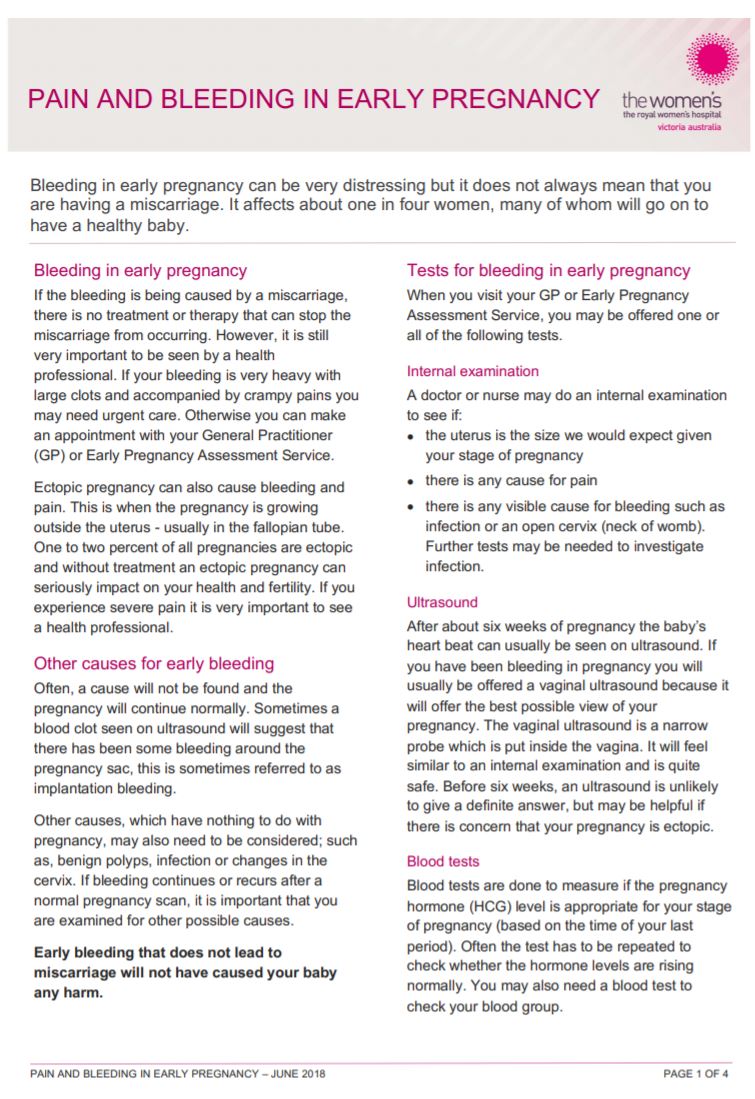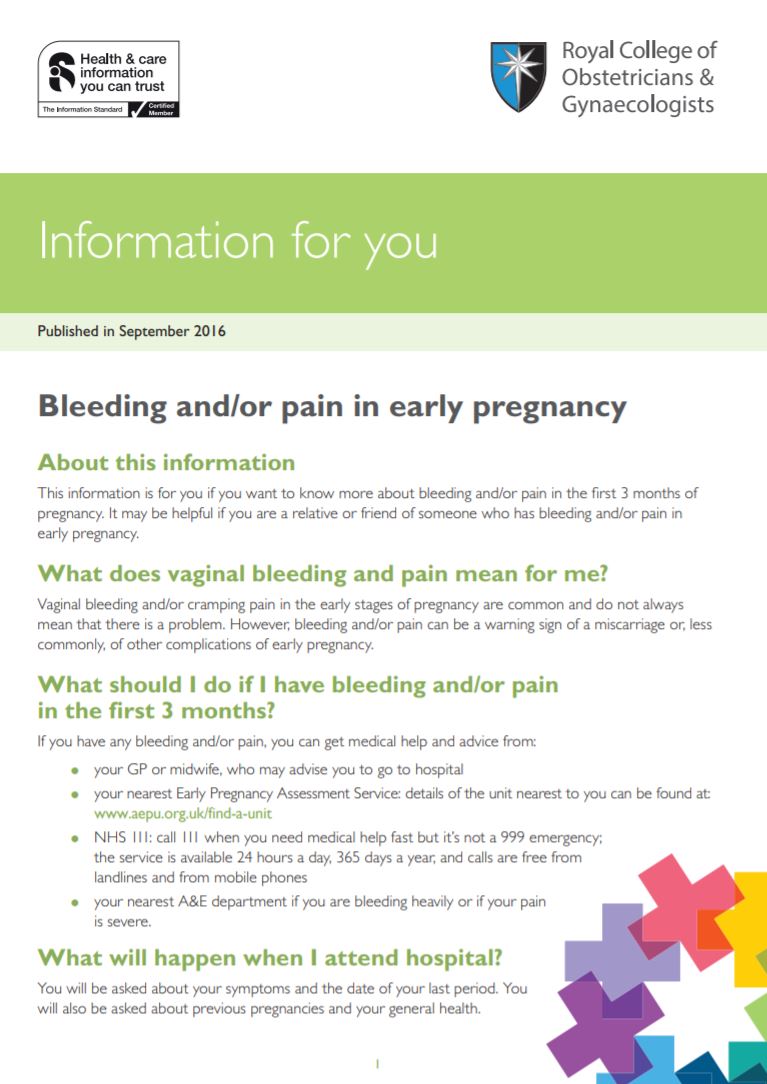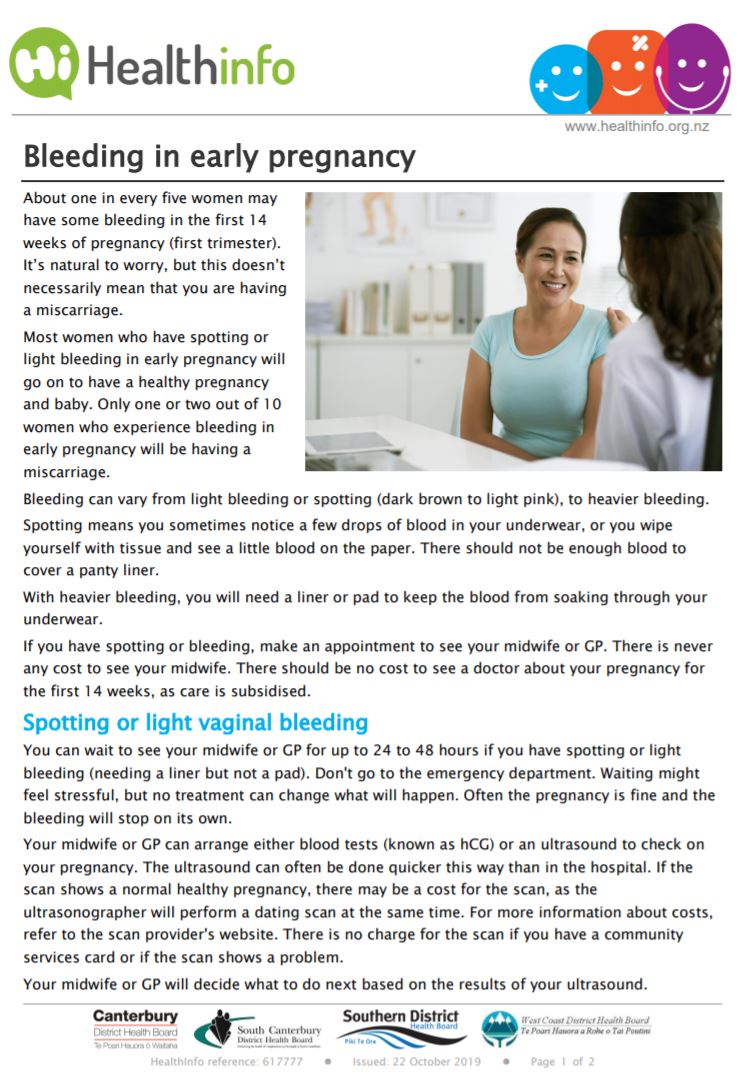- Any pain (kōharihari) in the lower part of your tummy and/or bleeding (toto) from your vagina (tenetene) in the first 3 months of pregnancy should be checked out.
- Pain and bleeding in early pregnancy affect about 1 in 4 pregnant people, but most go on to have a healthy pregnancy and baby.
- Common causes include implantation bleeding, cervical bleeding, miscarriage and ectopic pregnancy.
- You may need to have blood tests and an ultrasound scan to find out the cause. Sometimes a cause cannot be found.
- If you feel upset or distressed about this happening, there is support available.
|
Contact your midwife or GP, or go to the nearest emergency department if you have any of the following symptoms: |
|
Causes
Possible causes of pain and/or bleeding in early pregnancy include the following:
- Implantation bleed – this usually happens around the time your period would have been due. It happens when the developing embryo attaches itself to the wall of your womb. The bleeding is usually light and there is no pain.
- Cervical bleed – your cervix is prone to bleeding in pregnancy due to hormonal changes and increased blood flow to your cervix. This can also happen after sex. This bleeding is usually harmless but if you have had an abnormal cervical smear or are overdue a cervical smear, your cervix must be checked by a doctor to make sure that there is no abnormality on your cervix.
- Miscarriage – this is the loss of the pregnancy before 20 weeks’ gestation. Read more about miscarriage.
- Ectopic pregnancy – this is a pregnancy that occurs outside of your womb. Read more about ectopic pregnancy.
Other causes of pain and/or bleeding not related to pregnancy include:
- vaginal/cervical injury
- polyps or cervical abnormality
- an infection of your womb or cervix
- other causes of abdominal pain, such as a urinary tract infection (UTI), appendicitis or constipation.









